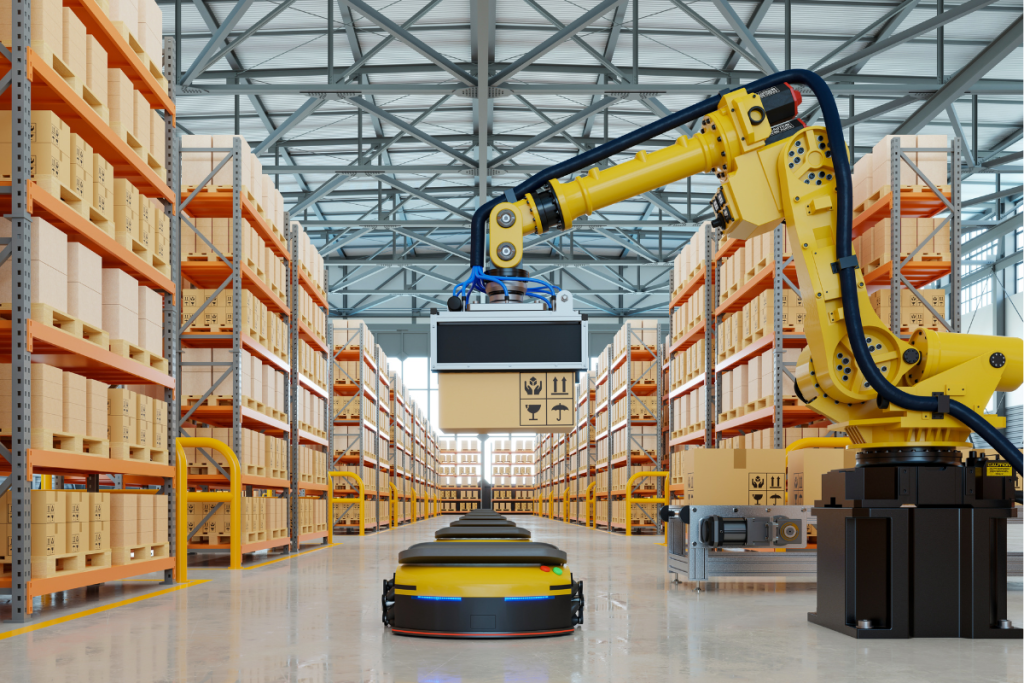For decades, cross-docking has promised leaner logistics by bypassing storage and moving goods directly from receiving to outbound dispatch. But execution has remained highly manual, prone to bottlenecks, scan errors, and coordination delays. That’s changing. A new class of robotic cross-dock systems is emerging, combining autonomous vehicles, AI routing engines, and real-time orchestration to shrink order cycle times to hours, not days.
From Manual Transfers to Machine-Orchestrated Flow
Traditional cross-docking relies on tightly choreographed human labor: unloaders, pickers, scanners, and forklift operators working within narrow time windows. During peak volume or labor shortages, delays compound quickly. Robotic systems are rewriting the workflow. Autonomous mobile robots (AMRs), robotic pallet movers, and high-speed sortation arms now enable a direct handoff from inbound pallets to outbound staging without human intervention.
These systems are being piloted in high-throughput environments where speed and accuracy are non-negotiable. For instance, Warp, a logistics technology company with a national network of over 50 cross-docks, is rolling out fully robotic cross-dock facilities designed to automate the entire freight lifecycle, from inbound receipt to outbound dispatch. The goal is to eliminate idle dwell time and compress order cycles through machine-to-machine coordination. In its new robotics-enabled site, AMRs handle dynamic routing, pallet movement, and lane alignment autonomously, targeting both B2B and D2C distribution flows.
This isn’t just about saving time on the warehouse floor, it’s about enabling a new fulfillment promise. Same-day dispatch, once limited to forward-deployed inventory, can now be achieved from central or regional DCs operating as cross-dock hubs. In a logistics network stretched by e-commerce, automation is making proximity matter less than orchestration.
The New Robotic Cross-Docking Stack
Autonomous Pallet Handoff Systems: Robotic depalletizers now unload mixed-SKU shipments directly onto sortation tracks. From there, AMRs or robotic shuttles ferry cartons or cases to specific outbound zones based on real-time destination mapping.
Live Dock Scheduling Algorithms: AI engines sync with carrier TMS feeds to align inbound goods with outbound departures. If a route gets delayed or reprioritized, goods are rerouted within minutes—not hours—preserving SLA compliance and avoiding truck detention charges.
In-Flight Order Reconciliation: As orders are scanned and matched in motion, the system flags mismatches, shortages, or overages in real time. Rather than waiting for EOD audits, operators can reconcile exceptions before the dock door closes.
AMR Fleet Coordination Layers: Swarm coordination software dynamically balances AMR traffic to avoid congestion, redistribute workload, and ensure that dock queues don’t become system bottlenecks. Load assignment and path planning adjust continuously as volume flows shift.
Digital Twin Feedback Loops: Some cross-dock pilots are using digital twins to simulate daily volume flows and test different slotting strategies. These insights inform shift-level resource allocation, exception handling policies, and even facility layout changes over time.
From Acceleration to Advantage
As logistics networks chase speed, robotic cross-docking offers something more valuable: repeatable responsiveness. While conventional automation accelerates workflows, robotic cross-docks restructure them entirely, eliminating idle inventory, compressing handling time, and enabling distribution agility at scale.
The strategic gain isn’t just faster fulfillment, it’s system-level fluidity. For logistics leaders managing volatile demand, fragmented carriers, or constrained labor, robotic cross-docking is becoming a node-level control tower. The ability to move goods through, not into, a warehouse could mark a fundamental shift in how networks compete.





